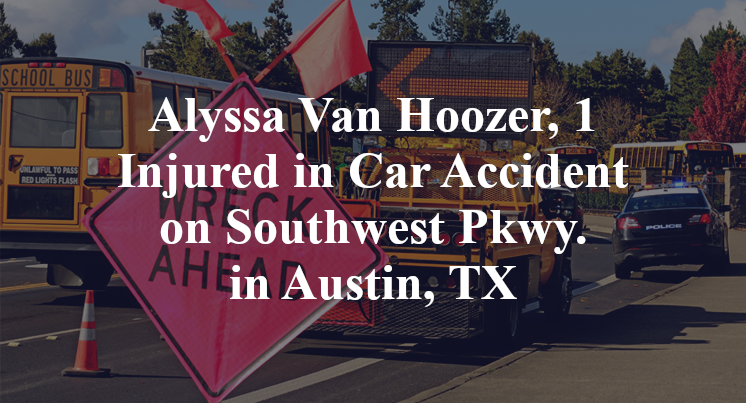Alyssa Van Hoozer, 1 Injured in Car Accident on Southwest Pkwy. in Austin, TX
Travis County, TX — July 22, 2024, Alyssa Van Hoozer and another person were injured due to a car accident just before 3:30 p.m. along Southwest Parkway.
According to authorities, 26-year-old Alyssa Van Hoozer was traveling in an eastbound Subaru Outback on Southwest Parkway in the vicinity west of the Tecoma Circle intersection when the accident took place.

Officials indicate that, for as yet unknown reasons, a northbound Lexus occupied by a 54-year-old woman exited a private drive at an apparently unsafe time, failing to yield the right-of-way to roadway traffic. A collision consequently occurred between the front-end of the Lexus and the front-right quarter of the Outback.
Van Hoozer reportedly sustained serious injuries over the course of the accident. The woman from the Lexus suffered minor injuries, as well, according to reports. Additional details pertaining to this incident are not available at this point in time.
Commentary
Crashes involving vehicles exiting private drives often look straightforward on paper, but the physical consequences—and the unanswered questions—tend to run much deeper. When someone is seriously hurt, it's important to make sure the investigation didn’t stop at the first explanation.
1. Did the authorities thoroughly investigate the crash?
When a vehicle pulls out from a private drive and into the path of traffic, the key issue is timing: how much time the Lexus had to cross, and whether the Subaru had any chance to react. Did investigators reconstruct how far away the Outback was when the Lexus began its move? Did they measure sightlines or vehicle speeds? Without a time-distance analysis and detailed scene mapping, the chain of events can get misinterpreted—or worse, oversimplified.
2. Has anyone looked into the possibility that a vehicle defect caused the crash?
Sometimes vehicles don’t behave the way drivers intend. Did the Lexus experience a brake delay or throttle issue that caused it to lurch forward? Was the steering responsive? And did the Subaru have functioning brakes or active safety systems that should have mitigated the crash? These are fair questions, especially when the vehicles appear to collide at a sharp angle. But if no one conducted a post-crash mechanical inspection, those answers may never surface.
3. Has all the electronic data relating to the crash been collected?
Both vehicles likely stored critical data in the seconds leading up to the crash—speed, throttle input, brake use, and steering actions. That information could confirm or challenge what drivers recall. External footage from surveillance systems or dashcams could also provide a clear picture of what occurred. But unless someone moved quickly to secure this data, much of it may have already disappeared.
When a crash results in serious injury, the surface explanation rarely tells the whole story. What matters most is whether anyone took the time to gather the facts that aren’t immediately obvious.
Takeaways:
- Private-drive crashes require careful timing and distance analysis—not just fault assignments.
- Mechanical or electronic malfunctions could have contributed and should be ruled out.
- Vehicle telemetry and surveillance footage can provide decisive evidence—if collected promptly.

*We appreciate your feedback and welcome anyone to comment on our blog entries, however all visitor blog comments must be approved by the site moderator prior to showing live on the site. By submitting a blog comment you acknowledge that your post may appear live on the site for any visitors to see, pending moderator approval. The operators of this site are not responsible for the accuracy or content of the comments made by site visitors. By submitting a comment, blog post, or email to this site you acknowledge that you may receive a response with regard to your questions or concerns. If you contact Grossman Law Offices using this online form, your message will not create an attorney-client relationship and will not necessarily be treated as privileged or confidential! You should not send sensitive or confidential information via the Internet. Since the Internet is not necessarily a secure environment, it is not possible to ensure that your message sent via the Internet might be kept secure and confidential. When you fill out a contact or comment form, send us an email directly, initiate a chat session or call us, you acknowledge we may use your contact information to communicate with you in the future for marketing purposes, but such marketing will always be done in an ethical way.